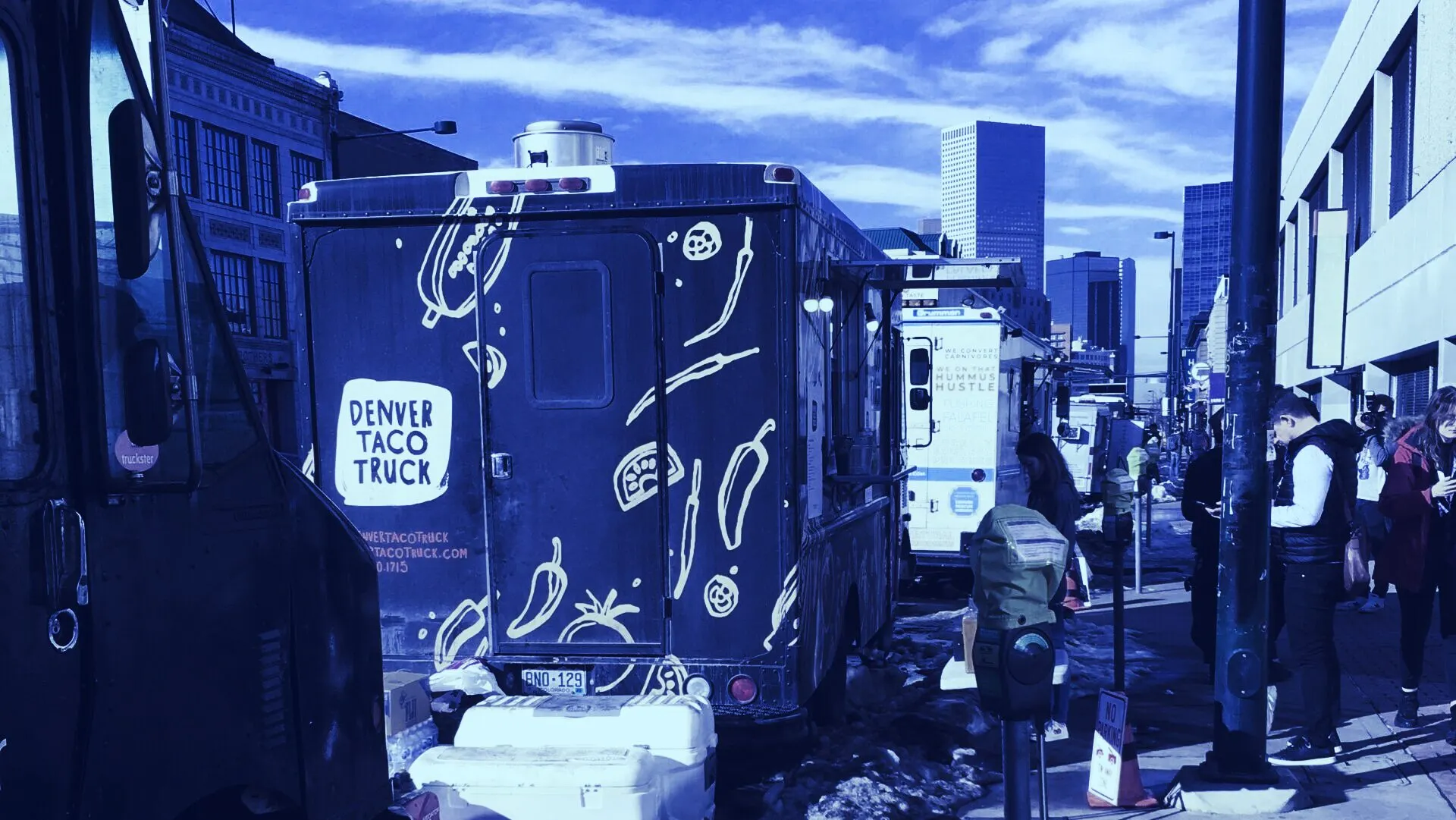In brief
- ETHDenver's radical experiment to use Dai to buy food had mixed results.
- Good news, 60% of transactions went through. Bad news, 40% didn't.
- We spoke to Austin Griffith, who runs the project, for his take on how it went.
While much of the talk inside ETHDenver was on generating earnings via decentralized finance (DeFi), cryptocurrency’s most basic use—as a means of payment—is still a work in progress.
For the second year in a row, all eyes were on the interaction between the food trucks and conference goers who were armed with burner wallets loaded with “BuffaloDai,” the conference crypto.
How did it go? Eh, so, so.

Some purchases weren’t going through, or took much longer to complete than credit card and cash transactions. It was a reminder that setting up even a small payment system is loads of work.
But this wasn’t just a small payment system, not anymore.
“It’s probably more like an eight-month project jammed into six weeks,” Austin Griffith, director of research at Gitcoin, told Decrypt. “You’re building the plane as you’re flying.”
He should know. The Colorado-based developer first rolled out Burner Wallet at last year’s event so people could send an event-specific cryptocurrency (in this case BuffiDai) between mobile phone web browsers. Attendees used QR codes to load money onto their burner wallet and then paid by scanning a QR code on their food truck of choice.
The idea was to create a pop-up economy to onboard merchants and let people actually use cryptocurrency. Everything worked smoothly a year ago, despite the curmudgeonly Decrypt correspondent’s few criticisms.
But this year’s wallet and BuffaloDai was an “insanely ambitious project,” said developer David Mihal. His interest was piqued by the experiment last year, and he and two other part-time devs worked with Griffith to improve the project.
Security was tightened up via contract wallets. Last year, user keys were stored locally. Though popup economies have limited exposure, an attacker could have run up a bill at the taco truck.
But that was just a start. Other elements allowed users to do more than simply buy swag and sushi rolls. The wallet can now support two tokens—BuffiDai for food purchases and XP for engaging with sponsors. It would also serve as the gateway to a DAO that would determine the winner of the hackathon. Essentially, it would be the main element tying together 1,300+ attendees at work across four floors.
Which is all well and good. But people still want to buy lunch.
Though loading the BuffiDai was painless for most participants, sending that crypto to vendors was not always easy. One vendor sighed in relief at the sight of a credit card. Another said (at around midday Friday) that about 60% of transactions had gone through, but 40% had not. The truck had resorted to writing down wallet-based transactions by hand and, presumably, trying to reconcile their numbers with the conference organizers afterward.
The BuffiDai team said a bunch of small problems hit at once. Griffith explained the remote procedure calls were delayed by about 15 seconds, meaning the system wasn’t processing fast enough.
Thankfully, because this was a hackathon, there was a chance to improve functionality. “Basically, we just had to set up some better UX for the user. Everything technically worked, but if the user pulled [the send screen] up too early and [clicked send] to buy food too fast, then it failed for them…When we finally figured out it was just a timing [issue], we just put something in the wallet that said, ‘Make sure they’re connected before you hit send.’”
By Friday night everything was working as intended. Moreover, attendees had a slick interface from which they could monitor how all the nodes were functioning, where people were spending their tokens, and even who was winning the race for XP tokens.
Still, there’s a risk that dropped transactions might dissuade vendors who are trying to adjust to a peer-to-peer system.
But that didn’t seem to be the case. “The DAI works great for us,” said one vendor. “We had a couple glitches in the beginning, but they worked it out right away.” He added: “It is nice to have. Because of this event last year, we were able to accept Bitcoin throughout the year. We didn’t have that many people ask for it—but when they did, they loved it.”

